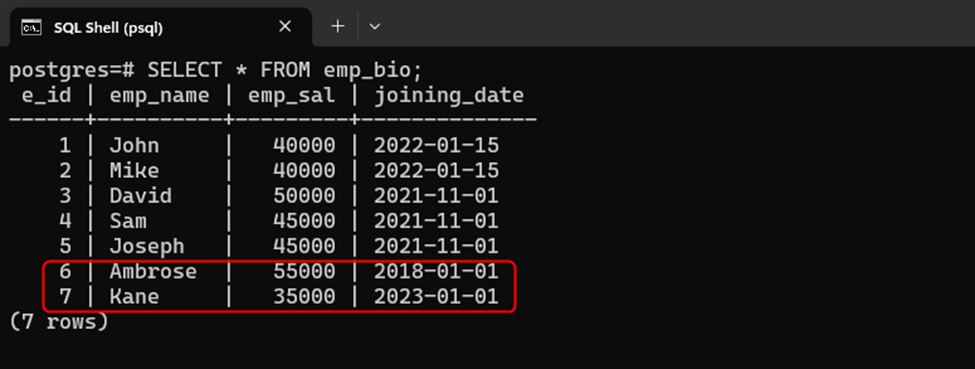When working with a PostgreSQL database, there are situations where you might need to execute a specific command multiple times or repeatedly with different values. In such cases, the PREPARE statement comes in handy. It enables us to prepare a statement with a unique name and execute it repeatedly(when needed) using the EXECUTE command.
This article will illustrate the use of PREPARE statement in PostgreSQL.
How Does the PREPARE Statement Work in PostgreSQL?
In PostgreSQL, the PREPARE statement creates a prepared statement that can be utilized repeatedly. It allows us to define parameters, which makes it possible to execute the command with different values simply by modifying the parameter values. It optimizes the performance of the Postgres Server by reducing the overhead of parsing, analyzing, and planning a query each time it is executed.
Syntax
Follow the below-given syntax to use the PREPARE statement in PostgreSQL:
PREPARE statement_name [ ( data_type [, ...] ) ] AS statement;
Once a statement is prepared, we can execute it using the EXECUTE statement:
EXECUTE statement_name (parameter_value1, parameter_value1, ...);
Moreover, if a prepared statement is no longer needed, it can be deallocated using the DEALLOCATE statement:
DEALLOCATE prepared_statement_name;
Example: How to Use PREPARE Statement in PostgreSQL
The following snippet demonstrates how to prepare a statement in Postgres:
PREPARE emp (INT, TEXT, INT, DATE) AS INSERT INTO emp_bio VALUES($1, $2, $3, $4);
The following snippet depicts that a statement has been prepared:

Let’s execute the above statement using the EXECUTE() function:
EXECUTE emp(6, 'Ambrose', 55000, '2018-01-01');
The prepared statement has been successfully executed:

Let’s execute the prepared statement one more time with different values:
EXECUTE emp(7, 'Kane', 35000, '2023-01-01');
The output shows that the statement executed with different values successfully:

Let’s confirm the prepared statement execution using the following query:
SELECT * FROM emp_bio;
The below snippet verifies the working of the prepared statement:

Suppose we want to deallocate the prepared statement, for this purpose, we will execute the following query:
DEALLOCATE emp;
The given statement has been deallocated successfully:

That’s all about the “PREPARE” statement in PostgreSQL.
Conclusion
In PostgreSQL, the PREPARE statement creates a prepared statement that can be utilized repeatedly. It allows us to define parameters, which makes it possible to execute the command with different values simply by modifying the parameter values. Once a statement is prepared, we can execute it using the EXECUTE statement. This post has illustrated the working of PREPARE statements in PostgreSQL using examples.



